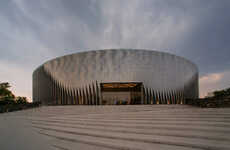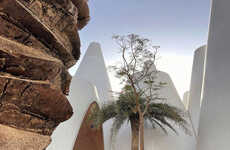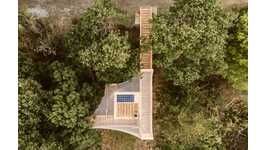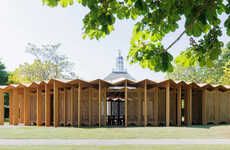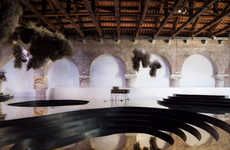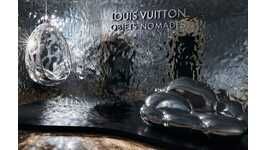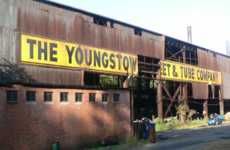
The Cicada Pavilion was Built to Mimic Insect Morphology
Ady Floyd — September 23, 2015 — Art & Design
References: tamatestudio & davidfrutos
Designers Tomás Amat and Pablo Belda of Tomás Amat Studio created the Cicada Pavilion, which pulled inspiration from the idea of insect morphology. The organic structure features a massive wavy dome of fluidly woven timber to represent the insect's tail. This portion leads into the body and then the head. Each section uses a new material to ensure distinct differentiation.
The 25-meter pavilion is a cultural space that features a kiosk-bar and restaurant. The structure makes use of the head and the body as storage and kitchen spaces. The body is made with colored metal bracing to add a playful twist to the overall facility. The Cicada Pavilion can be used year-round and is lit up during the dark nights.
The insect morphology pavilion is located within the gardens of a former tobacco factory in Spain.
The 25-meter pavilion is a cultural space that features a kiosk-bar and restaurant. The structure makes use of the head and the body as storage and kitchen spaces. The body is made with colored metal bracing to add a playful twist to the overall facility. The Cicada Pavilion can be used year-round and is lit up during the dark nights.
The insect morphology pavilion is located within the gardens of a former tobacco factory in Spain.
Trend Themes
1. Biomimicry Architecture - Designing architectural structures that mimic patterns and shapes found in nature, such as insect morphology.
2. Sustainable Construction - Creating eco-friendly structures that are energy-efficient and constructed from natural and renewable materials.
3. Outdoor Cultural Spaces - Increasing popularity of outdoor cultural spaces that provide areas for events and gatherings, such as the Cicada Pavilion kiosk-bar and restaurant.
Industry Implications
1. Architecture - Biomimicry provides opportunities for architects and designers to create structures that blend harmoniously with nature, which can include sustainable construction techniques.
2. Tourism and Hospitality - The increasing popularity of outdoor cultural spaces provides opportunities for the tourism and hospitality industry to expand and cater to the demand for unique and engaging experiences.
3. Event Planning - Outdoor cultural spaces like the Cicada Pavilion present opportunities for event planners to create memorable and unique events that take advantage of the natural environment.
1.4
Score
Popularity
Activity
Freshness



